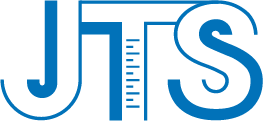Textile and footwear testingProduct
Your Location:Home > Textile and footwear testingOEKO-TEX® STANDARD 100 is a testing standard for harmful substances in textiles, commonly abbreviated as OEKO-TEX 100. It is an internationally influential eco-safety testing standard for textiles established by the International Association for Research and Testing in the Field of Textile Ecology, covering over 1,000 harmful substances. The standard aims to ensure that textiles do not contain harmful substances during production and processing, are safe for human health, and provide consumers with healthy and safe textiles.
Certification applies to: raw materials, semi-finished products, finished products of textiles and leather, and all accessories (such as yarn, fabric, clothing, home textiles, zippers, buttons, etc.).
The testing scope of OEKO-TEX® STANDARD 100 is very broad, encompassing limit requirements for numerous harmful substances, mainly including the following categories:
1.Legally prohibited and regulated substances: such as banned azo dyes (which may release carcinogenic aromatic amines), carcinogenic and allergenic dyes, organotin compounds (e.g., tributyltin TBT), per- and polyfluoroalkyl substances (PFOS/PFOA), etc.;
2.Substances harmful to health or the environment but not yet legally regulated: including extractable heavy metals (e.g., lead, cadmium, mercury), total heavy metals, polycyclic aromatic hydrocarbons (PAHs), chlorophenols, phthalates (plasticizers), surfactant residues (e.g., alkylphenol ethoxylates APEO), residual chemicals (e.g., phenol, aniline, short-chain chlorinated paraffins), pesticide/herbicide residues, etc.;
3.Parameters related to human health: such as formaldehyde content, pH value, color fastness (to water, perspiration, rubbing, etc.), odor, volatile organic compound (VOC) emissions, etc.;
4.Bioactive and flame-retardant substances: The standard原则上 does not accept products with bioactivity or flame-retardant finishing unless proven harmless to health through toxicological assessment by the OEKO-TEX® Association.
OEKO-TEX® STANDARD 100 classifies products into four levels based on their intended use and the closeness of skin contact, with higher levels requiring stricter standards.
•Product Class I: Textiles and materials for babies and toddlers up to 3 years old.
•Product Class II: Products in direct contact with skin, such as shirts, towels, bedding, etc.
•Product Class III: Products not in direct or with limited skin contact, such as jackets, coats, outerwear.
•Product Class IV: Decoration materials, such as tablecloths, carpets, wall coverings, curtains.
The certification standards are divided into Appendix 4 and Appendix 6:
•Appendix 4: Routine test items and their limit requirements, examining whether textiles contain substances potentially harmful to human health.
•Appendix 6: Extended test items and their limit requirements, covering more substances and stricter limits than Appendix 4, specially developed for companies focused on "detoxification."
Below are examples of limit values for some common harmful substances across different product classes (primarily based on Appendix 4 requirements; please refer to the latest standard for specifics):
| Harmful Substance Category | Specific Example | Product Class I (Babies) | Product Class II (Direct Skin Contact) | Product Class III (Indirect Skin Contact) | Product Class IV (Decoration Materials) | Primary Sources and Uses | Health and Environmental Risks |
| Banned Azo Dyes | Dyes that can release carcinogenic aromatic amines | ≤20 mg/kg | ≤20 mg/kg | ≤20 mg/kg | ≤20 mg/kg | Some synthetic dyes used in textile dyeing | Certain aromatic amines are carcinogenic and can be absorbed throughthe skin |
| Extractable Heavy Metals | Lead (Pb) | ≤0.2 mg/kg | ≤1.0 mg/kg | ≤1.0 mg/kg | ≤1.0 mg/kg | Dyes, catalysts, printing pastes, auxiliaries, etc. | Can accumulate in the body, damaging the nervous system and kidneysparticularly harmful to children's development |
| Cadmium (Cd) | ≤0.1 mg/kg | ≤0.1 mg/kg | ≤0.1 mg/kg | ≤0.1 mg/kg | |||
| Phthalates | DEHP, DBP, BBP, etc. | ≤0.1% | ≤0.1% | ≤0.1% | ≤0.1% | Plasticizers, commonly used in PVC plastics, coatings, printing, synthetic leather, etc. | Endocrine disruptors; may affect reproductive and developmental health |
| Perfluoroalkyl Substances | PFOA and its salts | ≤0.025 mg/kg | ≤0.025 mg/kg | ≤0.025 mg/kg | ≤0.025 mg/kg | Waterproof, oil-repellent finishes (e.g., for outdoor clothing) | Persistent, bioaccumulative; may affect endocrine and reproductivesystems |
| PFOA-related substances | ≤1.0 mg/kg | ≤1.0 mg/kg | ≤1.0 mg/kg | ≤1.0 mg/kg | |||
| Phenol | / | ≤20 mg/kg | ≤50 mg/kg | ≤50 mg/kg | ≤50 mg/kg | Found in materials like sponges | Can be absorbed through the skin; toxic, corrosive; may harm healthand cause heritable defects |
| Short-Chain Chlorinated Paraffins (SCCP) | / | ≤100 mg/kg | ≤100 mg/kg | ≤100 mg/kg | ≤100 mg/kg | Plasticizers, flame retardants | Bioaccumulative, persistent in the environment; listed as SVHC(Substances of Very High Concern) |
| Organotin Compounds | Tributyltin (TBT) | ≤0.5 mg/kg | ≤1.0 mg/kg | ≤1.0 mg/kg | ≤1.0 mg/kg | Antibacterial and preservative finishes | Affect immune and reproductive systems; can accumulate in the body |
| pH Value | / | 4.0–7.5 | 4.0–7.5 | 4.0–9.0 | 4.0–9.0 | Acid/alkali treatments during textile processing | Skin contact with overly acidic or alkaline textiles can cause irritation orallergies |
| Formaldehyde | / | ≤16 mg/kg | ≤75 mg/kg | ≤300 mg/kg | ≤300 mg/kg | Anti-wrinkle and shrink-resistant finishing agents | An allergen; long-term exposure can cause skin and respiratoryirritation, even carcinogenic risks |
J-Testing is a CNAS, CMA, and CPSIA accredited laboratory, committed to providing global clients with professional third-party testing, consulting services, and cross-border certification assistance.






 Our Service
Our Service
